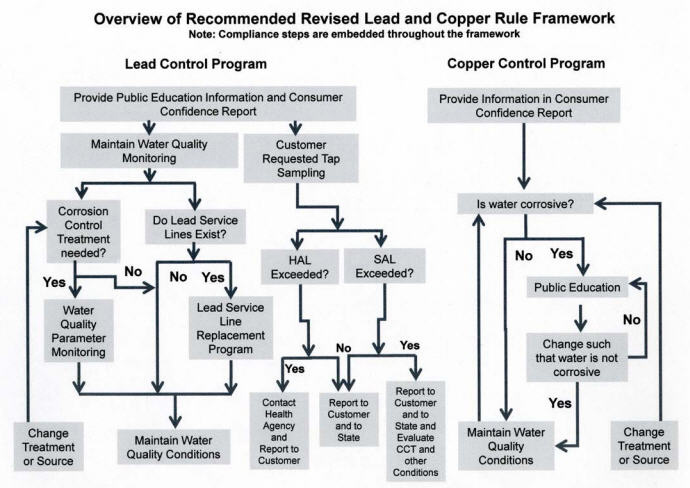Lead and Copper Rule Reboot: Flint's Failures Prompt Revisions

By Kevin Westerling,
@KevinOnWater
The federal Lead and Copper Rule (LCR) is destined for changes attributable to hard times in Flint, MI, and the agreement from an EPA advisory council that lessons must be learned from the latest crisis.
The good people of Flint, MI, can’t catch a break. Following a bout with disinfection byproducts last year, water consumers have since been exposed to lead and copper contamination. Such issues draw plenty of attention, striking right at the heart of the ‘value of water’ and the public outcry that arises when the water supply is compromised. And while the water industry is continually trying to head off problems before they escalate into public health crises, sometimes the solution is reactive rather than proactive. High-profile failures and dangerous repercussions tend to get results, and this time will likely prompt changes to a major rule for drinking water systems.
On Nov. 18, Rep. Dan Kildee (D-MI) testified before the U.S. EPA’s National Drinking Water Advisory Council (NDWAC), calling for revisions to the federal Lead and Copper Rule (LCR) that, in hindsight, might have prevented the Flint contamination event. Flint changed its drinking water source from Lake Huron to the Flint River in April 2014, and the chemical composition of the new source accelerated corrosion in the pipeline, thus releasing lead into the distribution system. Kildee, a Flint native, spoke in support of recommendations made by the Lead and Copper Rule Working Group (LCRWG) to add specific protocols and fail-safes to the existing LCR that would protect other communities from (some of) what Flint has had to endure. The NDWAC agreed, and approved the recommendations as part of its own advisory to the EPA for long-term LCR revisions.
Here are the new stipulations, detailed in the Report of the Lead and Copper Rule Working Group to the National Drinking Water Advisory Council:
- Require proactive lead service line (LSL) replacement programs, which set replacement goals, effectively engage customers in implementing those goals, and provide improved access to information about LSLs, in place of current requirements in which LSLs must be replaced only after a lead action level (AL) exceedance;
- Establish more robust public education requirements for lead and LSLs, by updating the Consumer Confidence Report (CCR), adding targeted outreach to consumers with LSLs and other vulnerable populations (pregnant women and families with infants and young children), and increasing the information available to the public;
- Strengthen corrosion control treatment (CCT), retaining the current rule requirements to re-assess CCT if changes to source water or treatment are planned, adding a requirement to review updates to EPA guidance to determine if new scientific information warrants changes;
- Modify monitoring requirements to provide for consumer requested tap samples for lead and to utilize results of tap samples for lead to inform consumer action to reduce the risks in their homes, to inform the appropriate public health agency when results are above a designated household action level, and to assess the effectiveness of CCT and/or other reasons for elevated lead results;
- Tailor water quality parameters (WQPs) to the specific CCT plan for each system, and increase the frequency of WQP monitoring for process control;
- Establish a health-based, household action level that triggers a report to the consumer and to the applicable health agency for follow up;
- Separate the requirements for copper from those for lead and focus new requirements where water is corrosive to copper; and
- Establish appropriate compliance and enforcement mechanisms.

Source: Report of the Lead and Copper Working Group to the National Drinking Water Advisory Council (Credit: LCRWG)
It’s been said to ‘never let a crisis go to waste.’ Although Flint's water woes are unwelcome and upsetting, the end result may be safer water across the U.S. for generations to come.
